|
|
|
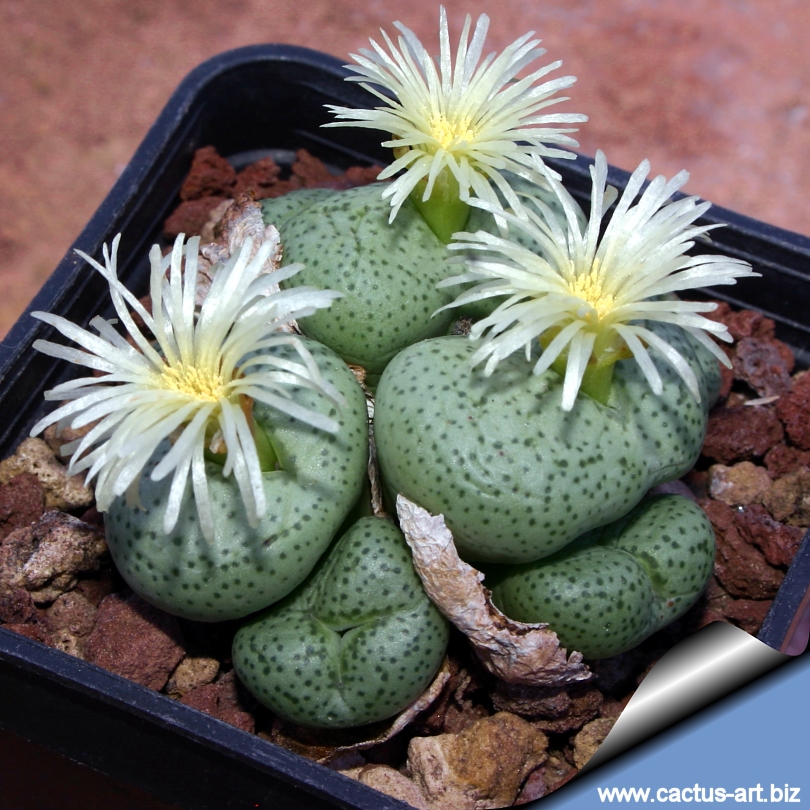
Conophytum subglobosum
This is a rounded "truncatum" that forms laxly grey-green
cushion. The small flowers with spidery petals are nocturnal, and
typically in shades of ivory-white, creamy, straw-yellow or salmon and
very faint scented.
|
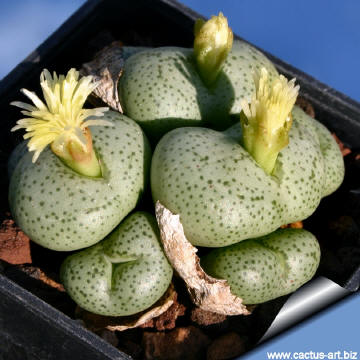 |
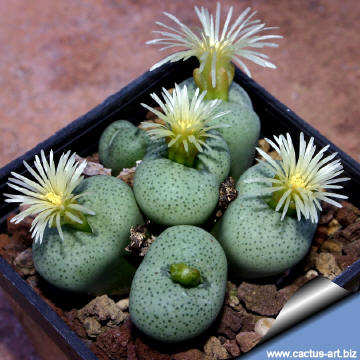 |
|
. |
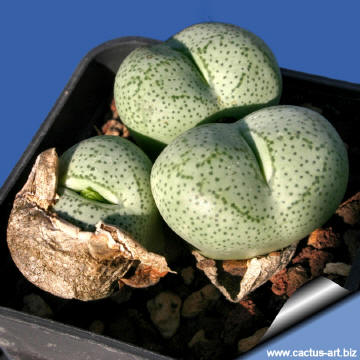 |
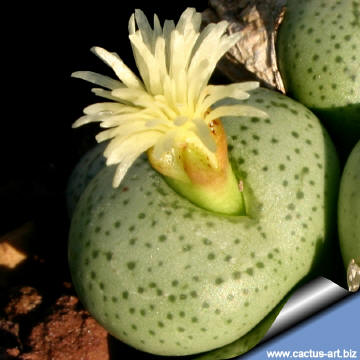 |
|
. |
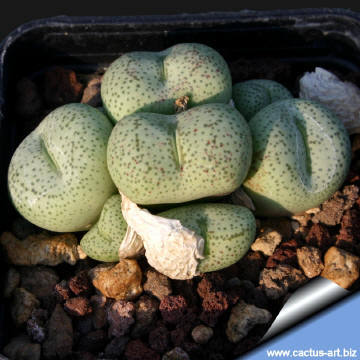 |
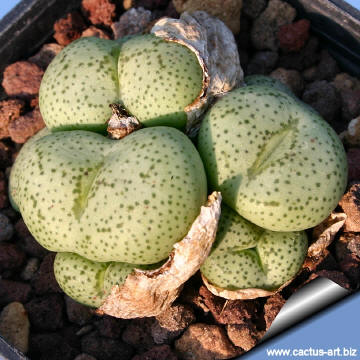 |
|


Advertising
|
|
|
|
|
|
|
Family: Mesebrianthemaceae (Aizoaceae)
Conophytum subglobosum
Tisch.
In: Cact. Journ., Brit . vi. 37
(1937)
Accepted
Scientific name: Conophytum truncatum
subsp. truncatum
(Thunberg) N.E.Br. 1920
Origin:
Widespread in the Little
Karoo , Western Cape, South Africa. C. truncatum is the
the easternmost species.
Habitat:
They are winter grower
succulents found in extreme dry areas in shale or quartzite rock
crevices (or on gravel) - known as obligate rock dwellers - where they
don't have to compete with other plants for water, space and light. They
are found generally growing on east, south or west-facing rocky outcrops
and slopes - very seldom north-facing (too hot). They are often found
growing in amongst mosses and lichens and other shade lovers. They grow,
receiving a bit of winter rain, none at summer, but ocean fog moves
inland in the evenings, and this moisture sustains a wealth of succulent
life in this harsh semi-desert region. Their flowers are pollinated by
nocturnal moths.
Synonyms:
- Mesembryanthemum truncatum Carl
Peter Thunberg 1791
|
|
|
|
Description: C.
truncatum is a slow-growing, clump-forming, perennial succulent
that forms huge tight mounds of sometimes many hundreds of pea-shaped
heads, each one of them consisting of one pair of reduced, fused
succulent leaves that get absorbed and regenerated every year.
Stem: Stemless.
Bodies: It is very variable in form, colour and markings with a
sunken fissure at the flattened tip. Stems ranges from small (4-5 mm in
diameter.) to large (25 mm in diameter); from completely unmarked
specimens to very heavily dark spotted or lined, and from bright green,
grey-green, blue-green to having a heavy reddish coloration all often
within a single population!
The so called "subglobosum" differs for the
rounded (Not truncated) pair of leaves.
Flowers: The small flowers with spidery petals are nocturnal, and
typically in shades of ivory-white, creamy, straw-yellow or salmon and
very faint scented.
Blooming: season: Plants flower during the fall months; each
blossom opens at night. During the day the flowers close.
Root: Very rudimentary filamentous root system
|
|
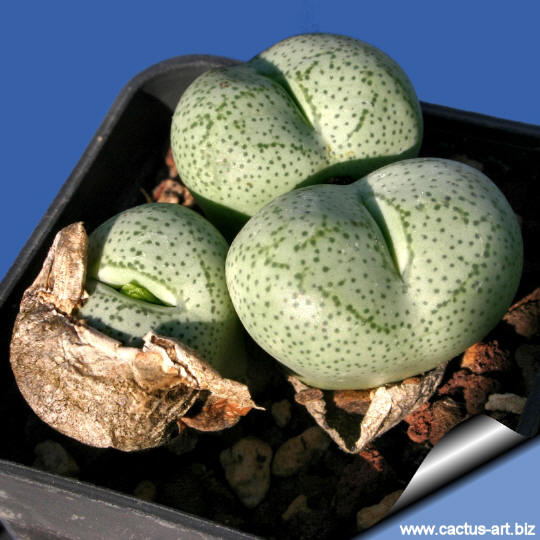
Cultivation: All the forms of C. truncatum are easy to
grow. These plants grow on winter rain and head for summer dormancy.
They require little water; otherwise its epidermis breaks (resulting in
unsightly scars). Water minimally in summer, (only when the plant
starts shrivelling), but it will generally grow even in summer if given
water. Water regularly in winter after the previous year's leaves have
dried up. Requires good drainage. Keep cool and shaded in summer, it
needs full sun or light shade. Hardy to -2°C. Ensure a very good
ventilation. Avoid to repot frequently. This plant may stay in the same
pot for many years.
Propagation: It can be
reproduced both by cuttings and seeds. Take the cutting from a grown-up
mother plant. Each
cutting must contain one or more heads along with
a fraction of root.
CONOPHYTUMS: Plants of the genus
Conophytum are also known as 'living pebbles'. During
the rest period (the summer months in Europe) a new body forms inside
the old, gradually taking all the substances from it until all that
remains is the skin, which dries and protects the young plant from the
heat of the sun and excess evaporation of water. The resting Conophytum
protected by this dry cover resembles a pebble and hence the name
'living pebble'. The growth period of most species is from August to
March. The temperature should be about 10 to 12°C
Photo of conspecific taxa, varieties, forms and cultivars of
Conophytum truncatum. (This
Taxon has lots of synonyms ( like
many other cacti) whit several controversial varieties and subspecies
and comprises a multitude of different forms, but where each form is
linked to others by populations of plants with intermediate
characteristics):
|
|